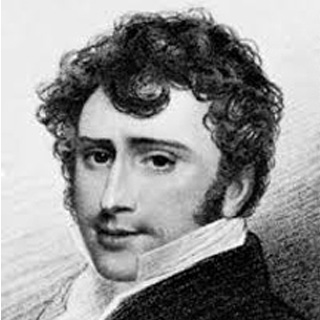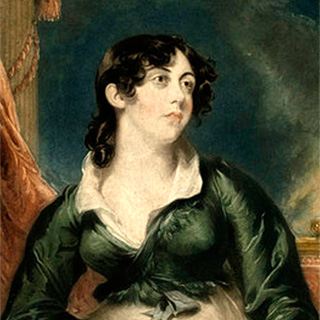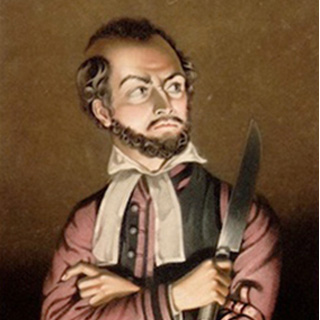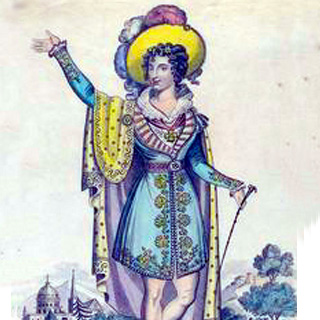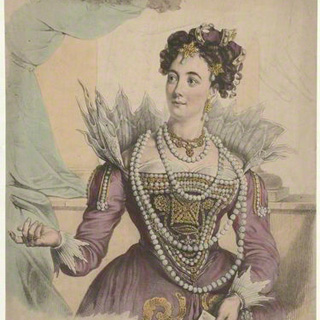Selected Biographies
The Drury Lane Chronicles, Part 1, 1826-7, contains biographical notes for 92 actors, actresses, managers, authors, and personalities related to the stage. These include:
EDMUND KEAN (1787-1833):
Kean was the greatest English tragedian of his time. After enduring the hardships of a provincial, stroller, in 1814 his electrifying debut as Shylock, followed by Othello, Richard III, Macbeth, et al, saved Robert Elliston’s Drury Lane from bankruptcy. In short order, Kean replaced John Philip Kemble of Covent Garden as England’s leading tragedian. Kean was also a Homeric drinker and womaniser. In 1820 the scandalous ‘Cox Affair’ forced him to take refuge in America. This Chronicle picks up the story of his protracted decline after his return to DL in late 1826. (More)
JAMES WILLIAM WALLACK (1795-1864):
Wallack was a renowned transatlantic actor and manager. He started in child parts at Drury Lane in 1807, and developed his skills in the provinces and London. To Oxberry, in 1825, he was certainly the most handsome actor upon the London stage; a practical actor who is always seen with pleasure’.
In 1818 Stephen Price offered Wallack ‘excellent terms’ to open as Macbeth at the N.Y. Park Theatre. He returned to Drury Lane as Elliston’s stage manager in 1823, and continued with Price in 1826-8. He also served the ill-fated Polhill-Lee-Bunn sequence of lessees in 1831-33. Reputedly, Wallack crossed the Atlantic 19 times before settling in America. He eventually retired to America to continue his career as a popular actor and successful manager. (More)
MRS BUNN (1799-1882):
In 1816 her debut as Imogen to Kean’s Bertram was an ‘unprecedented and decisive success’. Unfortunately, that ‘little hero of Drury Lane’, promptly declared he would not share the stage with her because she ‘ov’r towered’ him. In 1819 she married the manager of the Birmingham theatre Alfred Bunn,‘a little gentleman of overweening ambition’. Through Bunn’s influence, Margaret resumed her career at Drury Lane in leading parts opposite Kean and Macready. In 1825 Oxberry described her as ‘a remarkably fine woman’. With Bunn’s ‘connivance’ her affections were acquired by the serial cad, Col. Wm. Berkeley. In 1857 he left Margaret £1,000 plus £700 a year. In 1873 she financed the emigration of her two daughters and their families to Minnesota, where she at 83 in 1882. (More)
JOHN PRITT HARLEY (1786-1858):
Pritt was a quintessential product of the provincial ‘nursery’ system, equally competent in the full range of tragedy, comedy and opera. After joining Old Drury in 1815 he ‘was continually before the public and played the comic heroes in all the operas’. To Oxberry: he was ‘an honour to the stage, and supported his mother and sisters in respectability’. In the 1840s Harley served as Master of the venerable Drury Lane Theatrical Fund. In 1858 he was seized with paralysis at the Princess’s Theatre. He died penniless with a collection of over 300 walking sticks. (More)
MARY ANN PATON (1802-1860)
Miss Paton ranked ranked as one of England’s greatest operatic prima donnas. She established her primacy with a definitive demonstration of her powers as a contralto assoluta at Govent Garden in 1826, as Rienza to Braham’s Sir Huon in the first production of von Webber’s opera of Oberon. In 1824 she married Lord William Lennox (a fast friend of Col. Berkeley) who expropriated her earnings for gambling and dissipation. After a tumultuous marriage, Mary Ann and ‘Squinty’ Lennox were divorced when she sort refuge with an amiable tenor Joseph Wood, whom she married and had a son. In 1833 Mary Ann debuted at the Park Theatre, N.Y. According to Wemyss she was, for a while, ‘decidedly the best Singer who had been heard in the US’. After returning to England, she withdrew briefly to a convent, but resumed singing in theatres and concert. (More)
CATHERINE STEPHENS (1794-1882):
Italian trained: ‘Kitty’ was equally successful as a stage and concert singer. After her introduction in Bath and other provincial concerts, she made her stage debut at Covent Garden as Mandane in Arne’s Artaxerxes in 1813, after which she enjoyed high success at Drury Lane and Covent Garden. Alongside her stage successes, Kitty continued to earn high praise in Bishop’s Concerts of Ancient Music, and prestigious provincial musical festivals. She amassed a large fortune and retired at the peak of her career in 1835.
The Oxberrys described Kitty’s ‘countenance as fascinating, though not strictly speaking handsome’, but took pains to commend her unblemished offstage conduct. She lived under the protection of her brother until 1835 when she married the 5th Earl of Essex, an octogenarian widower and ‘distinguished patron of the drama’. Queen Victoria indicated her approval of the marriage by speaking to her at a ball. After Essex died one year later, Kitty continued in dignified retirement for another 40 years.
Other prominent members of Stephen Price’s company at Drury Lane were:
- William Charles Macready (1793-1873): self-styled the ‘Eminent Tragedian.
- John Braham (c1775-1856): the greatest stage & concert singer of his time.
- Mrs Julia Glover (c1779-1850): a versatile & popular comic actress.
- Frances Maria Kelly (1790-1882): a discerning and much respected actress.
- Madame Vestris (1797-1856): dancer, singer & innovative manager.
- Mrs Mary Ann Orger (1788-1849): a mainstay at Drury Lane for over 30 years.
- George Yarnold (c1792-18947): a versatile low comedian, singer & dancer.
Drury Lane Chronicles, Part 1, 1826-27
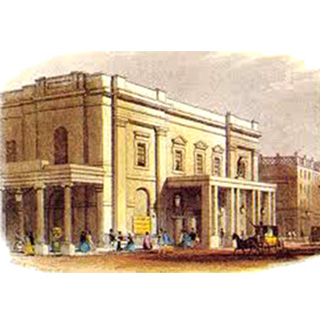
Buy the book to find out more!
